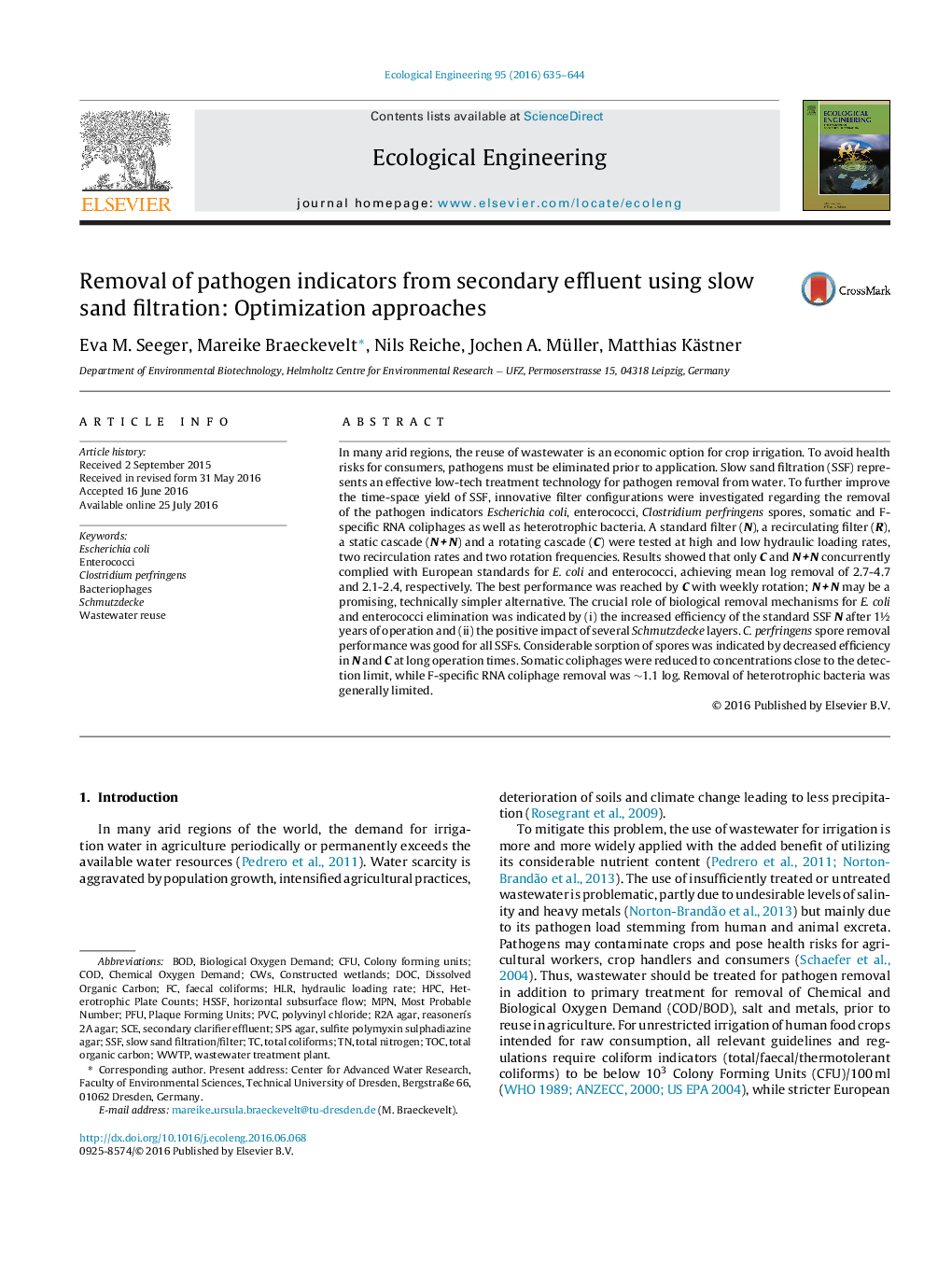| کد مقاله | کد نشریه | سال انتشار | مقاله انگلیسی | نسخه تمام متن |
|---|---|---|---|---|
| 4388493 | 1618004 | 2016 | 10 صفحه PDF | دانلود رایگان |
• Slow Sand Filters (SSF) were tested for pathogen removal prior to wastewater reuse.
• Target pathogen indicators were E. coli, enterococci, coliphages and Clostridia spores.
• Standard and recirculating SSFs and static and rotating cascades were investigated.
• Only cascade systems complied with European limits for E. coli and enterococci.
• E. coli and enterococci removal increased over time whereas spore removal decreased.
In many arid regions, the reuse of wastewater is an economic option for crop irrigation. To avoid health risks for consumers, pathogens must be eliminated prior to application. Slow sand filtration (SSF) represents an effective low-tech treatment technology for pathogen removal from water. To further improve the time-space yield of SSF, innovative filter configurations were investigated regarding the removal of the pathogen indicators Escherichia coli, enterococci, Clostridium perfringens spores, somatic and F-specific RNA coliphages as well as heterotrophic bacteria. A standard filter (N), a recirculating filter (R), a static cascade (N + N) and a rotating cascade (C) were tested at high and low hydraulic loading rates, two recirculation rates and two rotation frequencies. Results showed that only C and N + N concurrently complied with European standards for E. coli and enterococci, achieving mean log removal of 2.7-4.7 and 2.1-2.4, respectively. The best performance was reached by C with weekly rotation; N + N may be a promising, technically simpler alternative. The crucial role of biological removal mechanisms for E. coli and enterococci elimination was indicated by (i) the increased efficiency of the standard SSF N after 1½ years of operation and (ii) the positive impact of several Schmutzdecke layers. C. perfringens spore removal performance was good for all SSFs. Considerable sorption of spores was indicated by decreased efficiency in N and C at long operation times. Somatic coliphages were reduced to concentrations close to the detection limit, while F-specific RNA coliphage removal was ∼1.1 log. Removal of heterotrophic bacteria was generally limited.
Figure optionsDownload as PowerPoint slide
Journal: Ecological Engineering - Volume 95, October 2016, Pages 635–644
